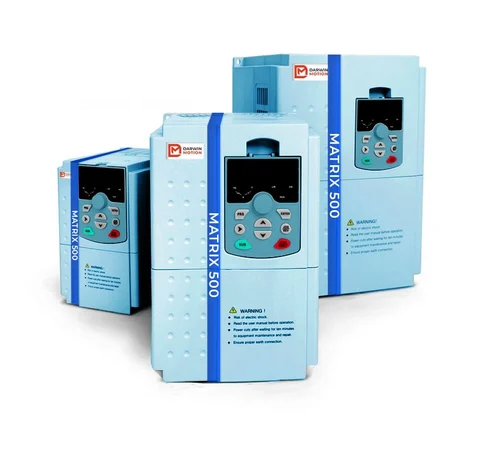Posted on 19th Dec 2024

Variable Speed Drives (VSDs), also known as Variable Frequency Drives (VFDs) or Adjustable Speed Drives (ASDs), are integral components in modern industrial, commercial, and residential applications. VSDs control the speed, torque, and operation of electric motors by adjusting the frequency and voltage supplied to the motor. These drives offer significant advantages, such as energy savings, improved control, and extended equipment lifespan. The versatility of VSDs allows them to be used across a broad range of sectors. Below are some of the key areas where VSDs are commonly utilized.
The primary domain where VSDs excel is in industrial settings. In factories and manufacturing plants, electric motors are typically used to power a wide array of equipment, from conveyor belts to pumps and fans. By controlling the speed of these motors, VSDs optimize performance and energy consumption.
Pumps and Fans: VSDs are used in pump stations, water treatment plants, and HVAC systems to adjust the motor speed according to the demand. For instance, in a water treatment plant, the flow rate and pressure can be adjusted by modifying the motor speed to maintain efficiency.
Conveyor Systems: In production lines, the speed of conveyor belts can be controlled by VSDs, ensuring the precise timing of operations and reducing energy consumption during idle periods.
Compressors: VSDs help maintain the required pressure levels in industrial air compressors, improving energy efficiency and reducing unnecessary power use when demand is low.
Machining Tools and Robotics: Motors in CNC machines and robotic arms can be driven by VSDs to ensure optimal performance during production processes.
VSDs play a crucial role in HVAC systems, providing precise control of motors in heating, ventilation, and air conditioning equipment. In these systems, controlling motor speed allows for greater energy savings, especially in large commercial buildings and industrial spaces, where the demand for airflow or temperature regulation may vary throughout the day.
Air Handling Units (AHUs): VSDs adjust the fan speeds to optimize airflow based on building requirements, providing comfort and reducing energy use.
Chillers and Pumps: In cooling systems, VSDs help regulate pump speeds and compressor operations, allowing for efficient management of cooling cycles and energy expenditure.
Ventilation Systems: In commercial and residential buildings, the ventilation system's fan speed is adjusted based on air quality, temperature, and humidity levels, reducing power consumption.
VSDs are widely used in water treatment and wastewater treatment plants. The operation of pumps, mixers, and aerators can be adjusted to match the specific needs of each process. This ensures that the treatment systems run at peak efficiency, reducing energy consumption and lowering operational costs.
Water Pumps: VSDs control the flow rates of water pumps, ensuring that the required amount of water is processed while minimizing energy usage.
Aeration Systems: The speed of aerators is adjusted to maintain optimal oxygen levels in wastewater, thus improving the efficiency of biological treatment processes.
Sludge Handling: Sludge pumps are driven by VSDs to control the flow rates and pressures needed for sludge handling, providing better control of processing.
In the mining and metals industries, VSDs are used to control the operation of various motors in crushers, mills, conveyors, and other equipment. These drives help maintain precise motor speeds, improving both safety and energy efficiency in these energy-intensive processes.
Crushers and Mills: VSDs regulate the speed of crushers and grinding mills, improving the efficiency of material processing and reducing energy consumption during off-peak times.
Conveyors and Hoists: Motor speeds in conveyor belts and hoists are controlled to ensure efficient material handling in mines and processing plants.
In the automotive industry, VSDs are used to power various machines, including robotics and automated assembly lines. VSDs improve the precision of manufacturing processes and contribute to significant energy savings by adjusting motor speeds to match specific production needs.
Robotic Arms: VSDs provide speed and torque control for robotic arms, ensuring smooth and efficient operations during assembly, painting, or welding processes.
Automated Conveyor Systems: VSDs are used to manage conveyor belt speeds, allowing for seamless movement of parts along the production line.
VSDs are also utilized in renewable energy systems, particularly in wind and solar energy applications. They regulate the speed of motors in wind turbines and control the conversion of energy in solar power systems.
Wind Turbines: VSDs control the rotational speed of wind turbine blades, optimizing energy production based on wind conditions.
Solar Inverters: In solar energy systems, VSDs help regulate the operation of inverters to maximize the efficiency of energy conversion from solar panels.
The transportation sector, including rail, maritime, and electric vehicles, benefits from the use of VSDs. In electric trains and buses, VSDs adjust motor speeds to control acceleration and braking, ensuring smoother and more efficient operation.
Electric Trains: VSDs are used to control the speed and torque of motors in electric trains, improving energy efficiency and providing smoother starts and stops.
Electric Buses and Vehicles: VSDs are used to manage the acceleration and deceleration of electric buses, contributing to energy efficiency and smoother operation.
In buildings, VSDs are employed in elevators and escalators to control motor speed. They ensure that elevators are energy-efficient, providing smooth starts, stops, and efficient operation, depending on traffic demands.
Elevator Motors: VSDs adjust motor speeds for smooth and energy-efficient elevator operation.
Escalators and Moving Walkways: VSDs help maintain efficient movement in escalators and moving walkways, adjusting speeds based on usage.
Darwin Motion VSDs are essential in a wide range of industries and applications where energy efficiency, operational control, and process optimization are crucial. From manufacturing and water treatment to HVAC systems and renewable energy, VSDs provide significant benefits in terms of cost savings, efficiency, and performance. As the demand for energy-efficient and sustainable solutions continues to rise, the role of VSDs in modern industry will only grow, making them a vital tool in the ongoing pursuit of operational excellence and environmental responsibility.